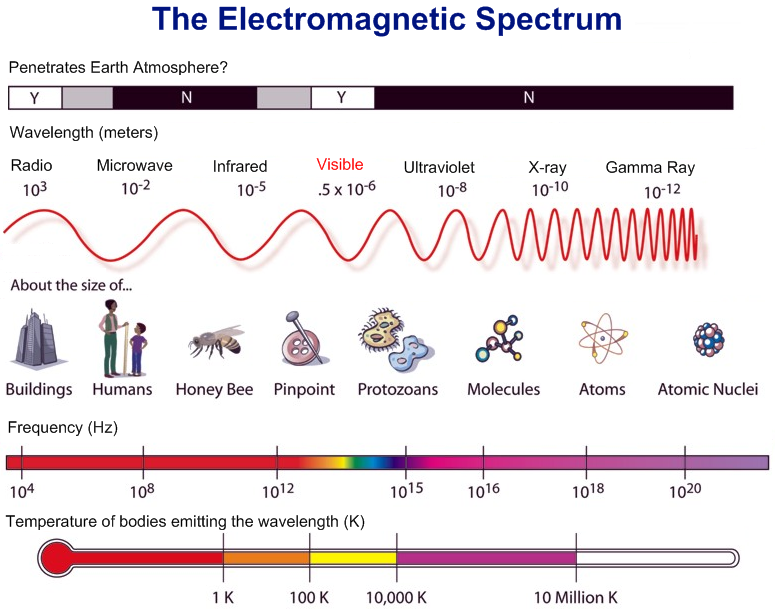Electromagnetic Spectrum
by Justin Luna
What is the Electromagnetic Spectrum?
- The Electromagnetic spectrum is the defining spectrum of all things we can and can't see which is any where from radio waves to visible light to gamma rays, in this power point I will be explaining what all the waves do and how we use them.

Radio Waves
- Radio waves are the at the top of the spectrum with the longest wavelength and lowest frequency, they are made from stars and planets.
- We use them for everyday uses such as Wi-Fi, cable TV, and of course radios.
- But a great use fro them are Radio Telescopes which help us detect stars and planets.

Microwaves
- Microwaves are closely similar to radio waves in functionality, but are much smaller then radio waves.
- We use them for sending information with microwaves towers, and we also use microwaves for radars it is similar to echo location but instead of a sound waves it's a unhearable microwaves.

Infrared Waves
- Infrared is basically heat that we can see but feel, and the closest waves to visible light.
- We can only feel the longest Infrared waves which are very close to being microwaves.

Visible Light
- Visible light are the only waves we can see with our naked eyes, red having the longest wavelength and violet having the smallest.
- And the sun is the best for seeing colors since light bounce off the object and our brains perceive color.
- A good way to see all of them is to use a prism to refract the light and a rainbow

Ultraviolet Waves
- UV waves are smaller then visible light.There are three different types of UV waves, they go Near UV, Far UV, Extreme UV.
- Near UV are UV waves closest to visible light. Far UV waves are in between Near UV and Extreme UV and has been the lest explored and little is know about it.

The top three are photos of different galaxies in Ultraviolet. The bottom are the same three galaxies but were taken in visible light.
X-Rays
- X-rays are often referenced by energy rather than wavelengths this is because x-rays are so small and tend to act like more of a particle.
- An x-ray detector collects photons, unlike radio dishes that focuses on radio waves.
- We use x-rays to detect black holes, neutron stars, binary star systems, supernova remnants, stars, and even some comets.

This is the first x-ray picture taken by Wilhelm Conrad Roentgen, a German scientist who found them by accident when experimenting with vacuum tubes. A few weeks later he took this image of his wife's hand and you can distinctly see her wedding ring.
Gamma-rays

- Gamma-rays have the shortest wavelength in the Electromagnetic spectrum and are made from radioactive atoms and nuclear explosion that occur from stars and planets.
- We use Gamma-rays to see distant suns, stars, planets, solar flares, supernovas, neutron stars, black holes and active galaxies.
This photo was taken by the CGRO satellite and you can see all the Gamma-rays it captured in one photo and even found a Sun, Pulsar, and the Milky Way.